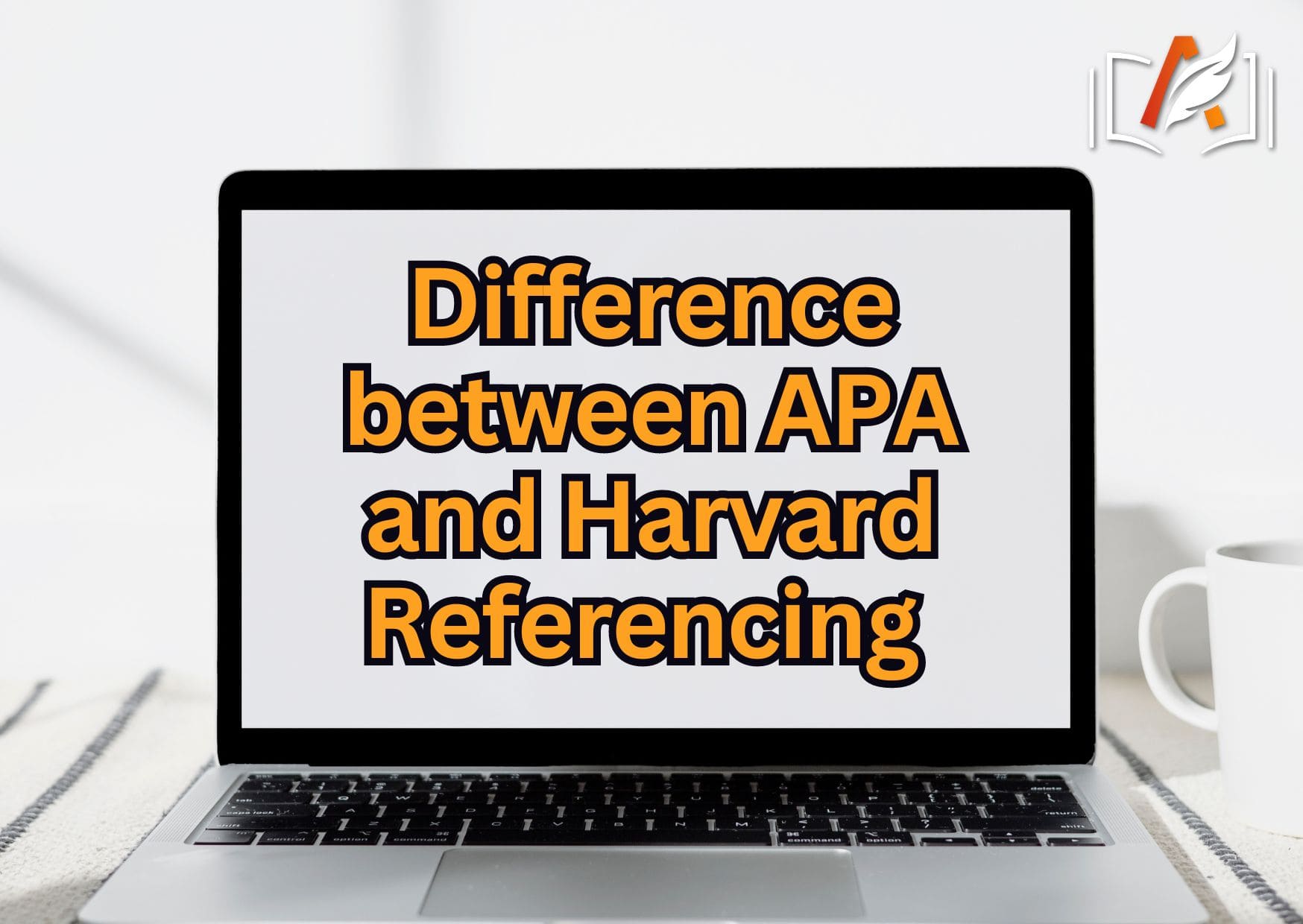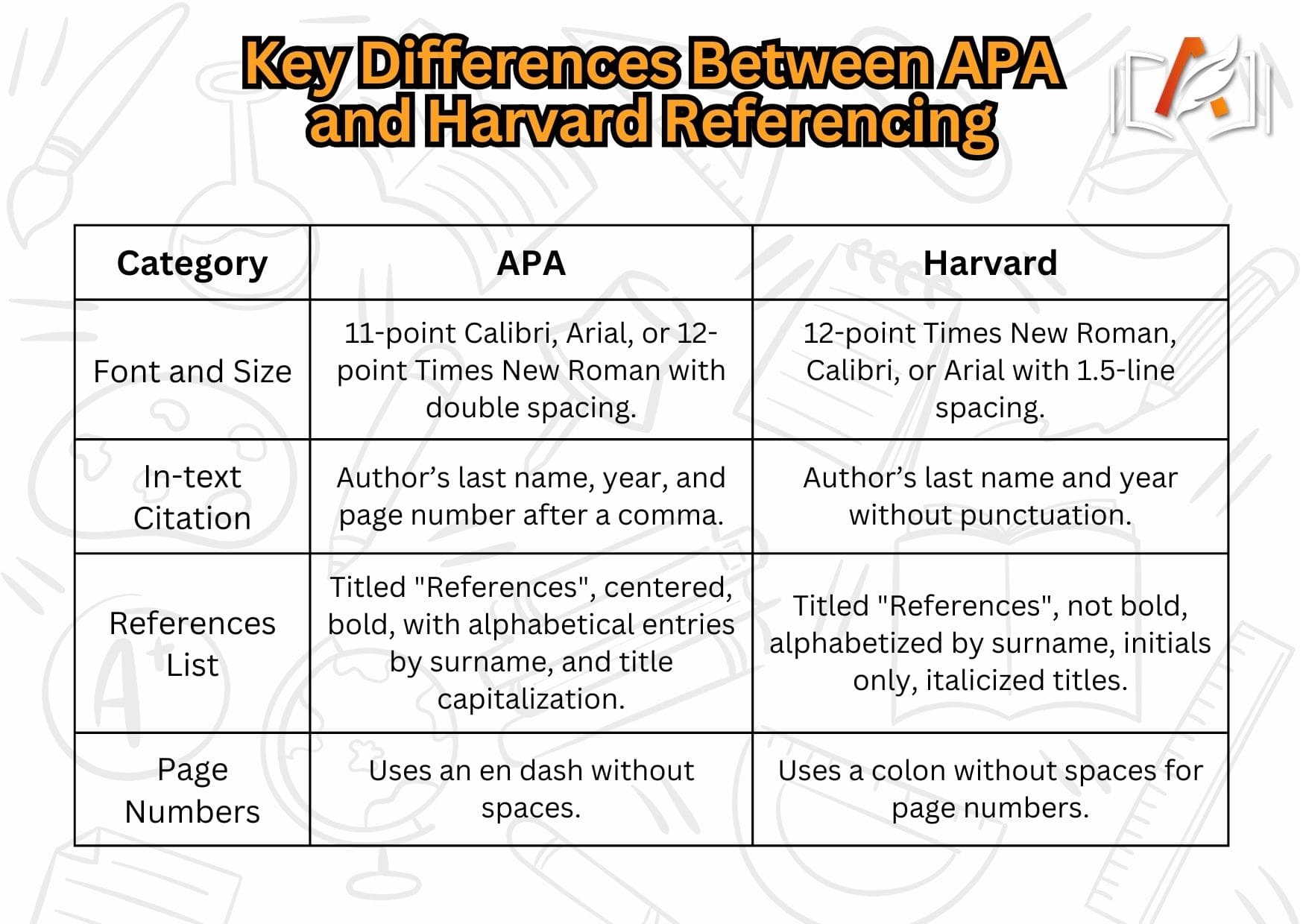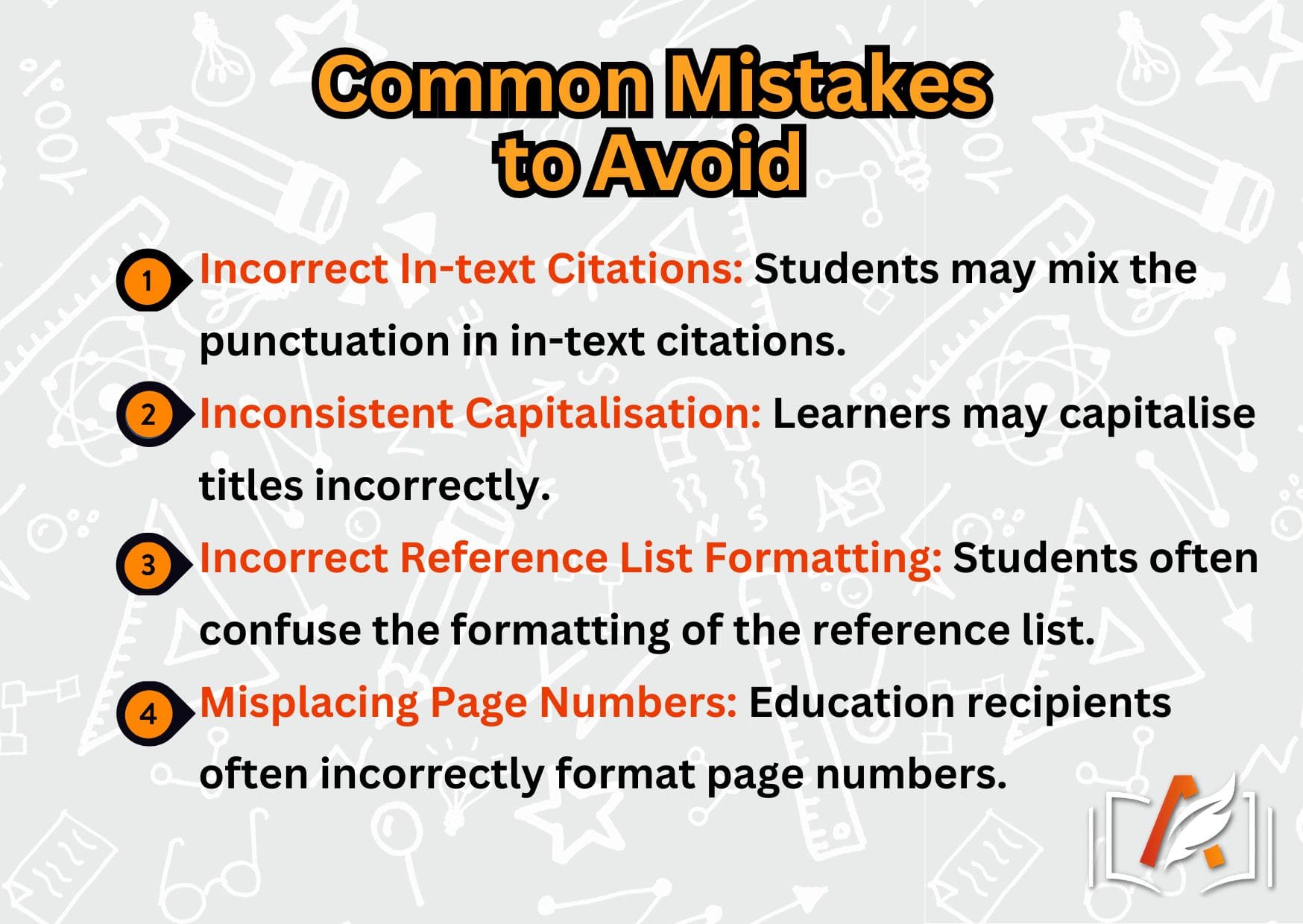 Ruby Butz
Ruby Butz

Referencing is a crucial part of academic writing. It shows that you've done your research, gives credit to original authors, and helps you avoid plagiarism. Nowadays, there are so many referencing styles with different rules and formats. Students are often confused about which style they should choose for their work. APA and Harvard are two of the most common styles with their own rules and formats. This article aims to break down the critical difference between APA and Harvard referencing, enabling you to make the right choice for your work. Whether you're writing an essay or a research paper, understanding these distinctions will help you present your ideas clearly and professionally.
What is APA Referencing?
APA referencing, the system developed by the American Psychological Association, is a widely used style for citing sources in academic writing. Originally used mainly in psychology papers, APA has now spread to other fields, including education, sociology, and business studies. It is popular in the United States, Canada and other regions where the social sciences dominate. This style follows an author-date format, where in-text citations include the name of the author followed by the year of publication in parentheses. Many students wonder, "Is APA the same as Harvard?" While both follow an author-date system, APA has specific punctuation, capitalisation, and formatting guidelines, distinguishing it from Harvard.
What is Harvard Referencing?
Harvard style, or the “author-date” referencing format, is a standard citation system used in academia, particularly in the humanities, social sciences and some areas of science. It is especially prevalent in regions like the UK, Australia, and New Zealand, where its simplicity and clarity are highly valued. A Harvard reference features an in-text citation, often in brackets, containing the surname of the author and the date of publication, usually followed by a page number. Full bibliographic details of the source are listed in the bibliography or reference list at the end of the document. This citation style allows readers to quickly locate the source of information by looking at the author’s name and the year of publication within the text.
What is the Difference between APA and Harvard Referencing?
Regarding citing sources, APA and Harvard referencing systems have distinct features. Understanding them is essential for ensuring your academic work meets the required standards. Choosing the correct format can enhance the clarity of your arguments and add credibility to your writing. Here are some critical distinctions between the two:
- References List: In APA referencing, the reference list is titled "References" and is centred and bold. Entries are ordered alphabetically by the first author's surname. Capitalise the first words of titles, subtitles, and proper nouns. The "References" list in Harvard references is alphabetised by the first author's surname, using only initials without commas or spaces. Titles are italicised, and the place of publication is included if needed.
- APA vs Harvard in text Citation: In APA referencing, the author's last name is followed by the year of publication with a comma between them, and the page numbers come after the comma preceded by "p.": (Smith, 2020, p. 15). In Harvard referencing, include the author's last name and the year of publication with no punctuation, for example (Smith 2020:15).
- Font and Size: APA uses fonts like 11-point Calibri, Arial, or 12-point Times New Roman with double spacing. Harvard uses 12-point Times New Roman, Calibri, or Arial in Harvard, with 1.5-line spacing.
- Page Numbers: APA uses an en dash without spaces for page numbers, for example (pp. 72-74). In Harvard, page numbers follow a colon with no spacing: (:112 or :13-15).
Is APA and Harvard referencing the same? While these differences may seem subtle, they are crucial in ensuring consistency and clarity in your writing. If you have trouble understanding these nuances, consider using expert support. Professional writers from a UK essay writing service will help you meet academic requirements and enhance your work quality. Collaboration with experienced authors will help you gain valuable insights into proper referencing techniques.

Practical Examples
A detailed reference table illustrates how to cite books, journal articles, and websites in APA and Harvard referencing styles. It should help clarify the difference between Harvard and APA citations.
| Source Type | APA Citation | Harvard Citation |
|---|---|---|
| Book | Author, A. A. (Year). Book title. Publisher. Example: Smith, J. (2020). Understanding Psychology. Penguin Books. |
Author A (Year) Book title, Publisher, Publication Place. Example: Smith J (2020) Understanding Psychology, Penguin Books, New York. |
| Journal Article | Author, A. A. (Year). Title of article. Journal Title, volume number(issue), page–page. https://doi.org/xxxxx. Example: Johnson, L. (2021). The impact of social media on youth. Journal of Social Studies, 55(1), 166–176, https://doi:100000000000. |
Author A (Year) ‘Title of article’, Journal Title, volume(issue):page–page, doi:number. Example: Johnson L (2021) ‘The impact of social media on youth’, Journal of Social Studies, 55(1):166–176, doi:100000000000. |
| Website | Author, A. A. (Year, Month Day). Title of the webpage. Name of Website. URL Example: Taylor, R. (2024, May 20). Benefits of healthy eating. Nutrition Hub. https://www.nutritionhub.com/healthy-eating |
Author A (Year) Title of the webpage, Name of Website, URL [optional], accessed Day Month Year. Example: Taylor R (2022) Benefits of healthy eating, Nutrition Hub, accessed 20 May 2024. |
These examples clearly show how to format citations correctly in both styles. Attention to details like punctuation, italicisation, and the order of information is essential, as these can vary significantly between APA and Harvard. Learning from these examples and immediately citing your papers correctly may be challenging.
If you need professional help with formatting, proofreading, editing, or writing a case study from scratch, StateOfWriting is always ready to provide the best writers for the job.
APA vs Harvard: Which One to Choose?
Some referencing styles have become more common in certain subjects than others due to the different nature of the academic disciplines. APA referencing is used in the social sciences, such as psychology, sociology, and education. It is popular in the social sciences because recent research and findings are vital. In a subject such as psychology, where findings can change rapidly, pointing to the latest studies can enhance your argument, as it indicates that you know what is currently being discussed in your field.
Considering APA vs. Harvard referencing, it's important to note that each style reflects the values and practices of its respective academic field. Harvard referencing tends to be used in the humanities—literature, history, cultural studies—and specific scientific disciplines. It is more flexible and enables the author to annotate more source types. This style allows for a more flexible approach that can accommodate various source types, which is particularly beneficial when analysing a wide range of materials, from classic literature to contemporary articles.
Common Mistakes to Avoid
Let's examine the most common mistakes students make when using APA and Harvard styles and learn tips from experts on how to avoid them:
1. Incorrect In-text Citations: Students may mix the punctuation in in-text citations. For example, they may use APA’s format when using Harvard or incorrectly place a comma in Harvard citations.
Tip: In APA, the author’s last name is followed by the year and a comma (e.g., Smith, 2020, p. 15). In Harvard, there’s no punctuation between the author and the year, and the page number follows a colon (e.g., Smith 2020:15).
2. Inconsistent Capitalisation: Learners may capitalise titles incorrectly, such as capitalising every word in the title.
Advice: In APA and Harvard, we capitalise only the first word of the title, subtitle, and proper nouns.
3. Incorrect Reference List Formatting: Students often confuse the formatting of the reference list. They may fail to use hanging indentation in APA or use the wrong order in Harvard.
Recommendation: In APA, use hanging indentation and centre the title References in bold. In Harvard, entries are aligned left with no indentation, and the title References is not bolded.
4. Misplacing Page Numbers: Education recipients often incorrectly format page numbers by adding extra spaces or using incorrect punctuation.
Note: In APA, page numbers should follow "pp." and use an en dash without spaces (e.g., pp. 55–56). In Harvard, place page numbers after a colon with no spaces (e.g., :111 or :19–20).
Is Harvard referencing the same as APA, and how distinguish between the two styles? If you have these problems, check your citation style guide, use a research paper writing service, or maintain a list of all your sources as you research. Use these strategies to navigate the complexities of academic writing more effectively and reduce the likelihood of errors.

Conclusion
Learning how to reference is one of the most important academic skills. It means you acknowledge the contribution of others and know how to support your argument, enhancing its credibility. Referencing your sources correctly and avoiding the accidental plagiarism of others’ work can also significantly impact your grades. Many learners wonder, “Is APA and Harvard the same?” and often make common referencing mistakes that can lead to confusion. If you have trouble with paper formatting, do not hesitate to ask for help. Academic writing support from experts can help polish your work and ensure you meet educational standards.

Meet Ruby Butz, the accomplished author at the StateOfWriting educational blog. With a Master’s in English Literature, notable articles, and extensive teaching experience, she has helped thousands of students develop strong writing skills.
Writers are verified and tested to comply with quality standards.
Work is completed in time and delivered before deadline.
Wide range of subjects and topics of any difficulty covered.
Client id #: 000412
Paper type: Research paperI just wanted to say thank you for the collaboration. You saved me from having to retake modules. The semester is finally coming to an end - just one more month to go, then it’s time to rest. See you next academic year
Client id #: 000411
Paper type: Thesis paperprofessional service on all fronts. my 10-day order was completed in just 6 days, giving me extra time to prepare for submission. very satisfied
Client id #: 000410
Paper type: CourseworkAll was completed just as I wanted. Excellent support - Big thanks to all of you 🙏🤗